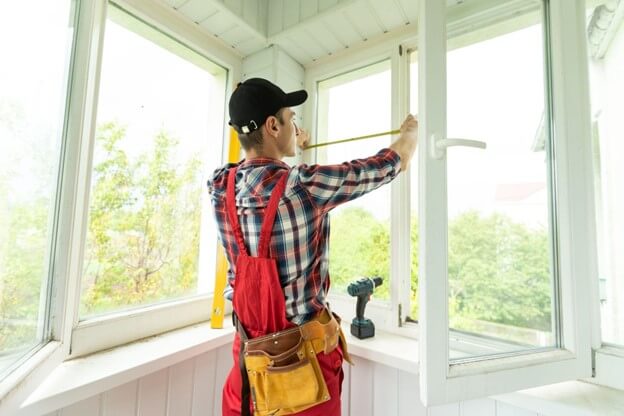
Ever feel like unwanted noise seems to crop up at the most inopportune times, like when you’re on a business call, recording something, or simply trying to unwind? Fortunately, there’s a relatively simple and cost-effective solution for when peace and quiet feel like rare commodities: install an acrylic noise barrier to help block out excess sound.
Just follow our helpful guide below and you’ll be on your way to a more relaxing atmosphere that promotes productivity, creativity, and focus.
Why DIY an Acrylic Noise Barrier?
Creating your own acrylic noise barrier offers benefits beyond just noise reduction. It provides a sense of empowerment and accomplishment as you take control of your own environment. Plus, installing it yourself allows you to customize everything to suit your specific needs and aesthetic preferences. Of course, staying within a tighter budget is one of the main perks of opting for the DIY route.
The Materials You Will Need
- Plexiglass: Also known as acrylic sheets, plexiglass serves as the fundamental component of your noise barrier. Durable, transparent, and easy to work with, it allows natural light to filter through while effectively blocking out unwanted sounds, creating the ideal ambiance.
- Felt Strips: Providing a cushioning layer between the acrylic sheets and mounting surface, felt strips help further reduce vibrations and sound transmissions.
- Foam Stripping with Adhesive: Creating a tight seal around the edges of the acrylic sheet prevents sounds from leaking through any gaps, which makes foam stripping with adhesive a must for this project.
- Brackets for Wall Mounting: Sturdy brackets are essential for securely attaching the acrylic sheets to the wall or window frame. Choose brackets that are appropriate for the size and weight of your barrier.
How To Install Your Acrylic Noise Barrier
- Measure: It’s important to get the exact dimensions right the first time, so measuring everything at least twice should always be the beginning step for any installation project.
- If you’re looking to install the acrylic noise barrier on the inside of the window, shave off ¼ inch on each side to ensure the sheet fits within the frame.
- If you’re choosing to install it outside the window frame, add 1 to 1½ inches to each side of your base measurement.
- As for the thickness of the acrylic sheet, ¼ inch should do the trick.
2. Cut the Plexiglass: Now that you’ve determined the exact measurements necessary for your project, you’ll need to precisely cut the plexiglass to suit your space. Acme Plastics offers convenient cut-to-size acrylic sheets that can be easily customized and delivered to your door, so you don’t have to lift a finger for this step.
3. Prepare the Surface: Dust, oil, and any type of debris can prevent the adhesive from doing its job, so you’ll want to clean the window and frame thoroughly to ensure everything sticks properly. Using a 50:50 mixture of isopropyl alcohol (IPA) and water will get the job done.
4.Install Padding: Apply foam weather-stripping or a felt strip that’s about ⅛ inch thick lengthwise along the windowsill. This will act as padding for the bottom of the plexiglass, reducing vibration from the windowsill.
5. Attach Mounting Hardware:
- When installing the barrier inside the window frame: Use adhesive-backed foam strips on the back of the plexiglass (around the sides and the top) to create a secure fit against the drywall.
- When installing the barrier outside the window frame: Affix brackets onto the drywall, ensuring they are level and securely anchored. The plexiglass will rest on these brackets.
6. Assemble Multiple Panels (if necessary): If assembling multiple panels for large windows, use joiners to hold the pieces together securely.
7. Install the Plexiglass: Carefully place the plexiglass into the window frame or against the wall-mounted brackets, depending on your chosen mounting method. Ensure it fits snugly and securely.
8. Seal Gaps: Use acoustical tape to seal any gaps between the plexiglass and the window frame or wall. This will prevent noise from entering through even the smallest openings.
9. Test and Adjust: Test the effectiveness of the acrylic window inserts by listening for any reduction in noise levels. Make adjustments as necessary to reduce the most amount of sound.
10. Enjoy Reduced Noise Levels: While not completely soundproof, your new acrylic noise barrier should help reduce incoming window noise by up to 10 decibels, particularly for airborne, light traffic, and directional noise. Louder, low-frequency noises may still be heard, but to a lesser extent.
Reasons to Install an Acrylic Noise Barrier
Installing an acrylic noise barrier offers several benefits. Not only can it improve your overall quality of life by creating a more peaceful and comfortable environment, but it also increases focus and productivity when working from home and can even help you get better sleep. With reduced noise, you’ll be able to simply relax without disturbances from the outside world.
Purchase the Acrylic Panels You Need with Acme
Ready to get started on your DIY acrylic noise barrier project? Acme Plastics offers a wide range of acrylic sheets cut to size, making it easy to find the perfect panels for your needs. Visit Acme Plastics today to explore their selection and start enjoying a quieter, more tranquil space. Or, contact us today to learn more.

